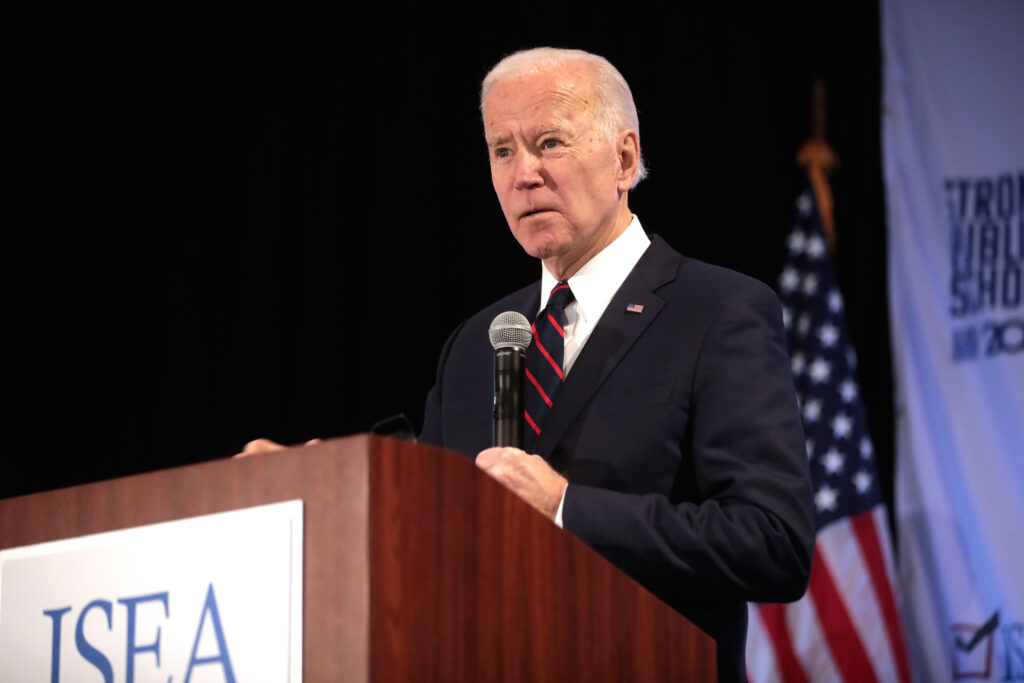Welcome to New Jersey, where people with individual health insurance routinely pay more than $12,000 a year for premiums, and can spend as much as $263,904.
Thanks to regulations passed in 1992, New Jersey has some of the highest insurance premiums in the entire country and an individual health insurance industry that is on life support. New Jersey legislators have passed many health insurance laws during the past decade, mostly to fix problems caused by the original 1992 reforms. But there is little evidence policymakers are willing to reexamine the flawed policies that have wrecked the state’s health insurance industry and robbed its customers of their freedom to choose affordable and high-quality policies.
Legislative History
In 1992, New Jersey Blue Cross and Blue Shield (NJBCBS) was the state’s “insurer of last resort,” meaning it was required to issue health coverage in the individual market to persons who did not qualify for group coverage or Medicare or Medicaid. Some 175,000 persons were insured in 1992 by NJBCBS under individual plans.
According to one estimate, NJBCBS lost $20 million on its individual insurance policies in 1992 but received subsidies to offset its losses, financed by a surcharge on hospital rates. In May 1992, a federal court ruled the surcharges violated the Employee Retirement Income Security Act of 1974 (ERISA), a federal law that preempts state intrusion into employer-based, self-funded health plans. Although that ruling was subsequently reversed, NJBCBS feared the loss of its subsidy and lobbied for legislative relief.
The result was the Individual Health Coverage Program, requiring insurance carriers doing business in New Jersey to either offer individual health insurance on a guaranteed issue basis or pay an assessment to carriers that did. Other elements of the legislation were:
- Guaranteed coverage and renewability for all eligible people regardless of their health status. A pre-existing condition exclusion may allow insurers to limit coverage during the first 12 months.
- Guaranteed renewal of policies, provided (1) the insured does not become eligible for coverage under a group plan; (2) premiums are paid in a timely fashion; and (3) no fraud is committed by the insured.
- Community rating of the premiums, with variation allowed only for family status (single, adult plus child, husband and wife, and family).
- Standardized insurance plans, referred to as Plans A, B, C, and D (indemnity options) and a single HMO plan. (See Figure 1 for coverage details.)
Since 1994, insurers have been required to make sure total claims are at least 75 percent of the total premium collected. Carriers not meeting the requirement must develop a refund plan that state regulators approve. According to the New Jersey Department of Banking and Insurance, insurers have paid refunds totaling $61.2 million since 1994.
Skyrocketing Premiums
According to John A. Kalosy, HIA, the New Jersey legislative chairman for the National Association of Health Underwriters, “community rating linked with standard state mandated plan designs was like mixing nitrogen and glycerin and expecting it not to blow up. It was like watching two teenage drivers playing a game of chicken.”
Monthly premiums for family coverage under “Plan D” ($500 deductible, indemnity insurance) offered in New Jersey by Aetna rose from $769 in 1994 to $5,855 in 2003, a stunning 661 percent increase. Increases by NJBCBS, Metropolitan Life, and National Health Insurance were similar. (See Figure 2.)
The annual premium cost for a family Plan D policy from Aetna is an incredible $70,260. The cost of similar coverage from other carriers is only slightly less: $63,828 for NJBCBS, $56,820 for Metropolitan Life, and $54,552 for National Health Insurance.
The four carriers in Figure 2 were chosen because they have sold Plan D policies since 1994. They are neither the most expensive nor the least expensive insurers in New Jersey. Trustmark, for example, charges $17,550 a month for Plan D–$210,600 a year. Celtic charges an amazing $21,992 a month–$263,904 a year!
The lowest monthly premium for a family Plan D policy, as of December 2003, was $3,810 offered by Oxford. Figure 3 shows the lowest monthly premiums charged for each of the four indemnity plans and the HMO plan required under the Individual Health Coverage Program. The lowest rate in the table is $424/month ($5,088/year) for PPO coverage for a single individual (not family) with a $1,000 deductible.
“New Jersey state legislators are unable or unwilling to cut benefits out of the standard plans because of perceived political pressure,” says Kalosy. “The average consumer is unable to afford the high cost of the individual health plans.”
Declining Coverage
The second impact of the 1992 reforms was a dramatic decline in the number of people who have individual health insurance. High prices have driven the number down from historic levels in New Jersey as well as from levels in states without community rating and guaranteed issue.
Exactly how many people buy individual health insurance in New Jersey is controversial, but data from three sources all show a rapid decline. (See Figure 4.)
- According to U.S. Census Bureau data, the number of persons in New Jersey with individual health insurance fell from 898,000 in 1992 to 552,000 in 2001.
- According to the Employee Benefits Research Institute, which excludes persons age 65 and older from its estimates, the number of people with individual coverage fell from 500,000 in 1992 to 300,000 in 2001.
- Finally, the New Jersey Individual Health Coverage Program estimates the number of individual insurance policies fell from 156,565 in 1993 to 78,298 in 2003.
Fleeing Carriers
The third impact of the 1992 reforms has been a decrease in the number of insurance carriers willing to sell individual insurance in New Jersey.
Until a few years ago, proponents of the 1992 reforms maintained the program worked. In mid-1999, for example, Katherine Swartz (Harvard School of Public Health) and Deborah Garnick (Brandies University) referred to the program as an “unprecedented achievement.” To justify their praise, they cited the fact that in 1995 28 carriers were serving the New Jersey individual market with guaranteed issue products.
By December 2003, however, only 15 carriers served the market. Even this lower number overstates the amount of competition in the market. Counting only carriers with distinct corporate parents reduces the number of firms to 11. And the very high premiums charged by some companies suggest they are filing rates but not selling polices.
Why companies left is not difficult to understand. Guaranteed issue means people with chronic illnesses cannot be turned down for individual health insurance coverage, even though by traditional underwriting standards they are uninsurable. Community rating means carriers are forced to set their premiums sufficiently high to cover these “worst case” customers, making their policies unaffordable to virtually anyone else. The result is a “death spiral” of ever-rising premiums and “adverse selection,” where only those with poor health and high medical expenses choose to buy individual insurance.
Making an already-bad situation worse, in 1996 insurance companies were assessed $43.5 million to offset the losses of NJBCBS. By August of that year, NJBCBS had been reimbursed $81.5 million for its losses in the individual market. If anyone benefitted from the 1992 legislation, it was NJBCBS. Most of its competitors have been driven out of business or out of the state.
Trying to Repair the Damage
Additional new regulations soon followed, prompted largely by market responses to the 1992 and 1994 regulations. In 1998, following public complaints about the quality of managed care, a law was enacted to regulate HMO conduct. In 1999, following the high-profile bankruptcy of Garden State, an indemnity insurer, regulators were given greater authority over insurer solvency. In 2000, legislation was passed to bail out two bankrupt HMOs.
In 2001, more legislation was adopted concerning HMO conduct, this time making external panel recommendations mandatory and giving private consumer groups ombudsmen-like authority over HMOs. Legislation adopted in 2002 created a “Basic and Essential Coverage” plan stripped of mandates and the community rating standard. For example, it provides for only 90 days of hospital room and board with a $500 per-hospital stay deductible. However, rates for those policies will be regulated. The Individual Health Coverage Program Board is only now engaged in rulemaking with respect to this plan and no rates are available.
In November 2003, New Jersey Governor James McGreevey signed legislation creating a Mandated Health Benefits Advisory Commission to study the “social, financial, and medical impact of proposed mandated health benefits.” The 15-member commission will review any proposed legislation that would require health insurance carriers to provide specific health benefits.
Conclusion
It has been more than 10 years since New Jersey legislated sweeping changes to its individual health insurance code. The combination of guaranteed issue and community rating has nearly destroyed the market for health insurance for individuals.
Most of the new laws adopted since 1994 have failed to address the real sources of the damage caused by the state’s sweeping insurance regulations adopted in 1992. Instead, these subsequent laws battle the unintended consequences of bad policies, such as bankruptcies, rising premiums, and unaccountable and financially unstable HMOs.
Lawrence Koller, an independent insurance broker in Northern New Jersey and member of the National Association of Health Underwriters, says “a major problem is that no politician wants to face these issues. No one wants to take away benefits. In fact, if a politician is sitting in his/her office and a constituent comes in complaining their insurance doesn’t cover something, the politician is more likely to try to help the constituent by offering a new mandate that the health plan has to cover. The impact on rates and potential future ‘uninsured’ doesn’t seem to be given as much weight.”
Koller goes on to say, “The media don’t help either. The typical news report doesn’t distinguish between large group, small group, and individual insurance markets. The public and politicians lump all insurance companies together as the bad guys–the ones with the deep pockets.”
Enactment in 2002 of the “Basic and Essential Coverage” plans with fairly broad rate bands is a small but favorable step back from the abyss. The legislation recognizes the need to allow carriers to offer individual health insurance plans that are attractive to the young and healthy. It seeks to accomplish this, though, by allowing insurers to offer deliberately crippled insurance products that the chronically ill won’t want to buy. New Jerseyans deserve affordable individual health insurance policies without being forced to settle for policies that limit coverage to 90 days of hospital room and board and require a $500 per-hospital stay deductible.
There seems to be little interest among New Jersey legislators in abandoning the community rating and guaranteed issue mandates that have caused the state’s insurers and their customers so much suffering. Until that attitude changes, New Jersey will remain the “poster child” for how to destroy a health insurance market.
Next month: Vermont
Conrad F. Meier is managing editor of Health Care News. His email address is [email protected].



